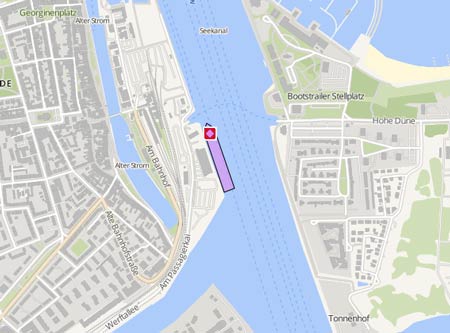NIPPON MARU
Course/Position
Latest ports
Latest Waypoints
Latest news
Cruise ship to be retired
MOL Cruises, the leisure operation for the Mitsui O.S.K. Lines, plans to retire the 'Nippon Maru' in Yokohama on May 10, 2026. The ship consistently operating in the Japanese market over her 35-year career, offering cruises around the Japanese islands reaching smaller ports not accessible to larger cruise ships. She offered a focus on cultural enrichment and traditional Japanese culture. Itt was decided to retire the ship for operational and economic reasons. To date, the 'Nippon Maru' has traveled 2,877,642 nautical miles during over 2,000 cruises, hosting more than 600,000 passengers, and visiting over 400 ports in and out of Japan. In addition to the domestic cruises, she operated longer voyages including nine world cruises. The legacy of the 'Nippon Maru' and her contribution to the Japanese cruise industry will be honored during her final season between February and May 2026, with several cruises and events, featuring special commemorative gifts and menus.
USA seeking more than $8 million in damages from the operator of the 'Nippon Maru'
The USA were seeking more than $8 million in damages from the operator of the 'Nippon Maru' for a pier accident at Apra Harbor in 2018 that a federal report later concluded was caused mainly by the ship master’s alcohol drinking. The stern had struck the Navy’s fueling wharf in Apra Harbor, resulting in no less than $8,006,397.10 in damages to the Navy’s fueling wharf, the Department of Justice’s lawsuit on March 1, 2023, stated. Efforts to reach a settlement between the parties years after the accident failed. Now, the Department of Justice, in its lawsuit filed in the District Court of Guam, seeks judgment against the Mitsui O.S.K. Passenger Line Ltd. and Mitsui O.S.K. Lines Ltd. The lawsuit seeks the sale of the 'Nippon Maru', proceeds of which will be used to pay out the U.S. claim, with interest and costs. It said the defendants’ failure to exercise care and skill in the navigation of the 'Nippon Maru', including failure on the part of the master of the ship, resulted in damage to the fueling wharf. The lawsuit said that it is presumed that the 'Nippon Maru' was at fault for causing damage to the Naval fueling wharf because at the time of the allision, or the running of one ship upon another object that is stationary, the cruise ship was underway and the fueling wharf was, and remained, stationary. Report with photo: https://www.guampdn.com/news/us-sues-nippon-maru-cruise-ship-for-8m-damage-to-wharf-in-2018/article_5a3c8112-bbe4-11ed-ac02-6febc83692d7.html
MOL starts demonstration test of vessel image recognition system using AI technology on Nippon Maru
Mitsui O.S.K. Lines, Ltd. (MOL) announced the joint development, along with SenseTime Japan Ltd. , of a new vessel image recognition and recording system, and the system’s installation for demonstration testing aboard the cruise ship "Nippon Maru" operated by Mitsui O.S.K. Passenger Line, Ltd. The system’s graphic recognition engine was developed by incorporating MOL’s knowledge and applying artificial intelligence (AI) deep learning technology, allowing it to recognize surrounding vessels. The system recognizes and automatically records vessels with high accuracy using a terminal equipped with a graphic processing unit (GPU) and ultrahigh-resolution cameras. The image recognition technology, which can be used even at night or during other periods of poor visibility, can detect small vessels that are not recognizable by vessel automatic identification systems (AIS). MOL views advanced image recognition as an underlying technology needed for automated watch-keeping, as the company works to realize the autonomous smart ships of the future. International treaty and domestic law require vessels to be equipped with AIS, but the regulations do not apply to ocean-going freighters of less than 300 gross tons and coastal vessels of less than 500 gross tons.
Upload News

